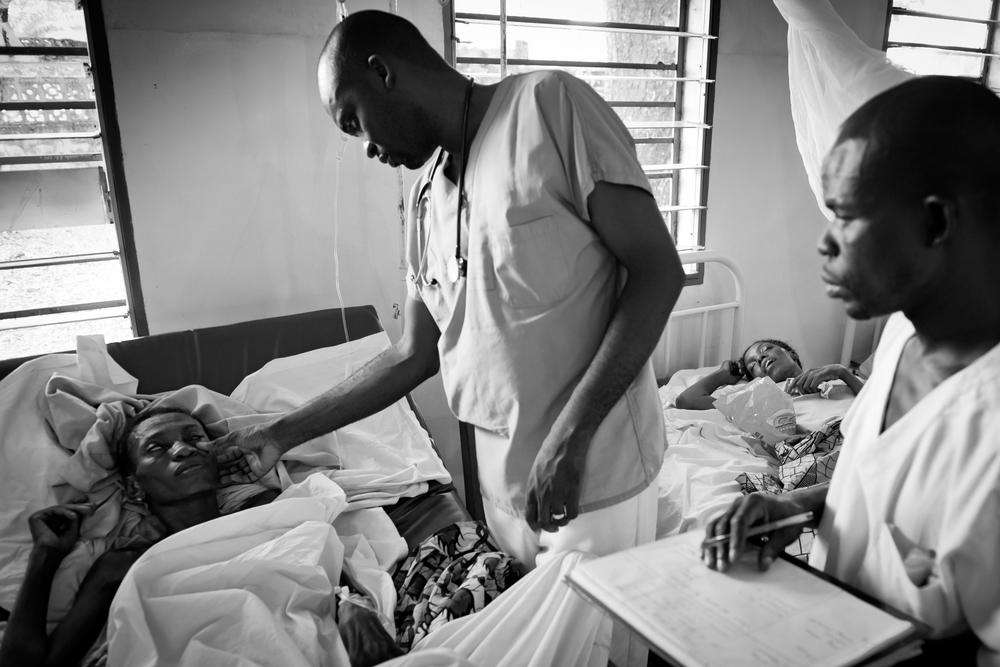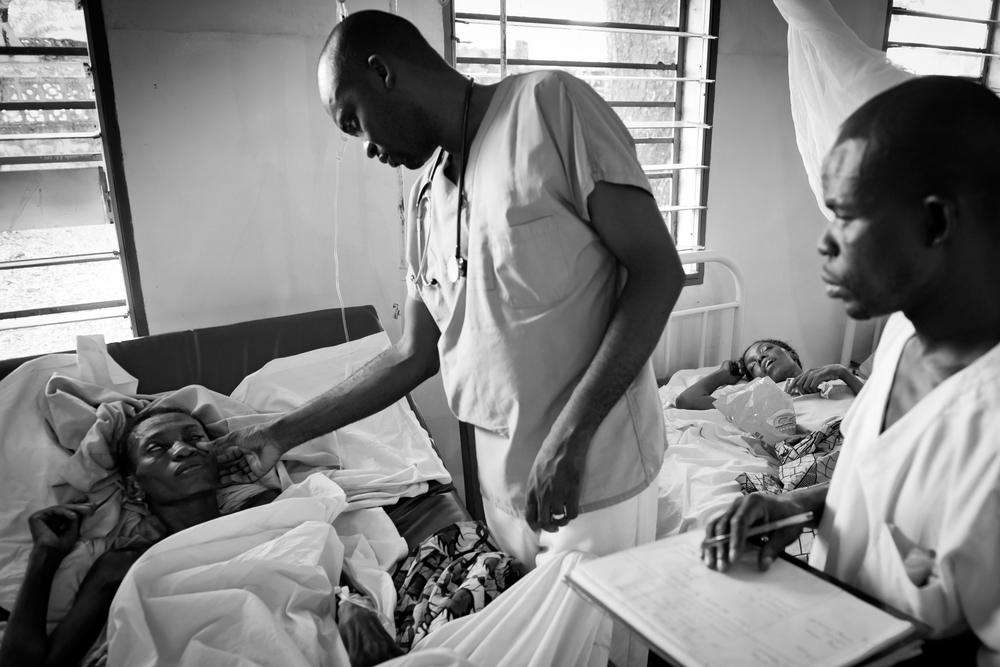Click Here to Download the Full Report
Globally, the years 2000 to 2015 saw the scaling-up of access to antiretroviral therapy (ART), with a 35 percent decrease in AIDS-related deaths since 2005. A record number of almost 16 million people living with HIV (PLHIV) have been initiated on ART as of mid-2015, three in four of whom live in sub-Saharan Africa, where the needs are most acute. Civil society and public health services alike have rallied to bring new evidence-based treatments and best practices to PLHIV.
Building on this success, in 2015 the Joint United Nations Program on HIV/AIDS (UNAIDS) set ambitious global targets to be achieved by 2020. Referred to as "90-90-90," their aim is that 90 percent of all PLHIV will know their HIV status; 90 percent of all people with diagnosed HIV infection will receive sustained ART; and 90 percent of all people on ART will achieve viral suppression.
While this fast-tracking of the HIV response is expected to prevent 75 percent of new infections by 2020, UNAIDS warns of the negative consequences of failing to reach these targets by the deadline: "The epidemic will have rebounded by 2030, representing an even more serious threat to the world’s future health and well-being and requiring substantial resources for what would then be an uncontrolled epidemic."
While the trend in international health funding for HIV/AIDS and ART, and the policies that drive the funding, has been to focus on high-burden countries and HIV "hotspots" in Sub-Saharan Africa, most countries in the region classified by the UN as the West and Central Africa (WCA) region have been neglected. The WCA region is made up of 25 countries, most of them with relatively small populations. Their average prevalence rates are relatively low compared to Southern Africa. However, most of these countries struggle to offer ART to those who need it, their failures leading to excess mortality and morbidity, as well as limiting their ability to curb the spread of disease. In the WCA region, 76 percent of those who need antiretroviral therapy—a total of five million people—are still awaiting treatment. The unmet needs in most of these countries are slipping further out of focus.
In WCA, ART coverage rates lag behind those of Southern Africa. While countries faced with an overwhelming HIV burden have risen to the challenge by making major changes to their health services, countries in WCA have had less incentive to adapt their service delivery models, and less support to do so. Many also struggle with weak health systems and competing health priorities, problems which are exacerbated in places which are prone to recurrent crises. Many countries in WCA failed to implement some of the innovative methods used elsewhere for rolling out ART, due to resistance or a lack of awareness, instead resorting to ill-adapted approaches. Alternative solutions to meet the needs in these specific contexts are urgently required.
Over one in four AIDS-related deaths worldwide occur in WCA and four in ten children dying from AIDS succumb in WCA. Over one in four AIDS-related deaths worldwide occurs in WCA, while four in every ten children who die from AIDS succumb in the region. Unless the current failures of policy and international health financing to tackle the growing epidemic within this region are addressed, the chances of reaching the new and ambitious goals of 90-90-90 are very slim indeed.
With the world focusing on changing the course of the HIV pandemic within the next five years, this may represent the only chance for people in WCA to access lifesaving treatment. The Fast-Track initiative to reach the 90-90-90 goals should also benefit the people of WCA.
Doctors Without Borders/Médecins Sans Frontières (MSF) works across the globe providing HIV services to PLHIV, including projects in the WCA region. In 2014, MSF teams provided care for 229,900 PLHIV, and supported ART for 226,500 people in 19 countries worldwide. MSF teams have first-hand experience of the grave consequences for people unlucky enough to live in countries that have not benefited from the global antiretroviral (ARV) revolution.
This report aims to highlight the shortfalls in policy and practices for PLHIV in WCA countries that face significant treatment gaps. It points to key obstacles to boosting ART coverage in WCA, focusing on contexts where MSF is involved in the HIV response. It brings together the experience of MSF teams, including data from local pilot projects, small-scale patient data collection, patient surveys, and other programmatic information.
Lessons learned on HIV treatment scale-up in Southern African countries and elsewhere could be game changers for PLHIV in WCA. However, certain policies and approaches currently being applied will need modification, due to the scope and spread of the epidemic due to stigma against PLHIV and due to specific weaknesses in the existing health systems which hinder the quality of and access to ART. The report describes pilot projects with alternative approaches, both in WCA and elsewhere, and their potential to break through the current status quo. Three case studies from countries in the region—Democratic Republic of Congo (DRC), Central African Republic (CAR) and Guinea—demonstrate the main obstacles to and opportunities for expanded and accelerated ART initiation and retention in care.
Our observations highlight the urgent need to overcome the current status quo and develop an adapted fast-track action framework for the countries in WCA. Concrete proposals for a catch-up plan to close the treatment gap in WCA are included in this report, including the call to triple ART initiations by 2020 in countries with less than 50 percent HIV treatment coverage, and to transfer knowledge and experience from places that have effectively rolled out ART provision.
Click Here to Download the Full Report





